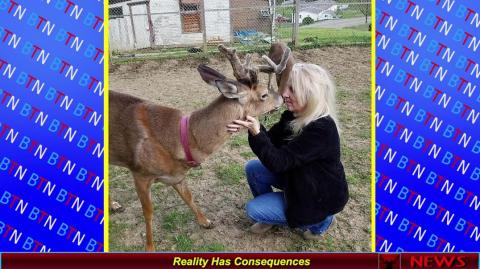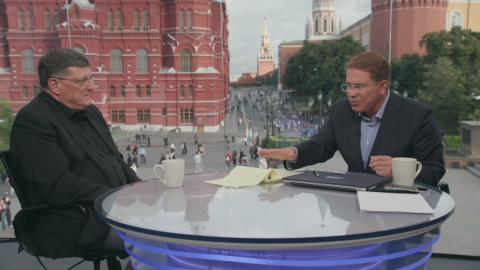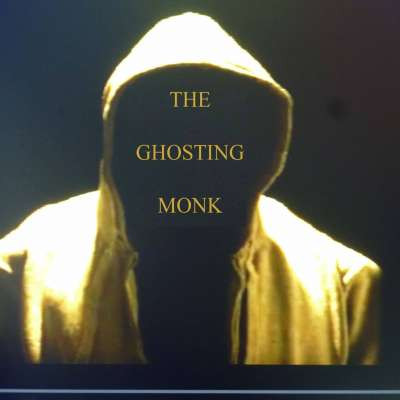CERN - The Reality Annihilator-
Well CERN is being fired up on Tuesday the 5 th July. wonder what will happen if anything this time/ the first time they publically fired it up the whole fucvking world changed, well mine did! Back in March I felt a shift? could they have v=been testing CERN? I've been feeling that same "Shift" feeling in the last week or two, and now I find out they are firing it up again? Make of that what you will? As for Braces on dollies teeth when she smiles at JKaw's in Moonraker? well I found by old VHS player and my VHS Bond films and watched that scene ansd Dolly .............................................Has Braces, so I think with the M/E thing it wqas done with electronic's or something?
I persnally am NOT deluded or Paranoid especially as I've laughed of civid untill I pissed myself and that isn#'t one of the Symptom's either - Pissing myself not laughing! lol! so being of sound body and MIND, I'm ready for anything they can throw my way, be it Demon's from a rip in time from Cern or some fat psycho Cat on a money laundering bing! for me WEIRD has become the normal and I study it with some depth, hopefully remaining sanbe by sane standards that is?
i think CERN is being fired up if it is a portal or pissjole, because all their plan's so far have and are turning to SHITE! lol! wonder what will come through? women already look and act like Demon's or possessed if nothing else! everything is inverted and means the opposite of what it really means! so what is left to fuck us all over with? i can honestly say (there's a rare word)! that littl eto nothing that has happenbed since either 911 or at least 2011 wnen I notice shit happening that was unavoidable to miss, put's me in mind of being ready for the next chapter in this "End Time2 as religious types call it? Maybe GOD will put in an appearance seeing as he has been rather lacking i9n recent years with an appearance?
I'm pretty convinced that whatever is running this shit show is either not human or doesn't understand the Human condition and strength at all? Peace.
0



 SoloMan Zone
SoloMan Zone
 RT
RT
 Freshfit
Freshfit


 Better Bachelor
Better Bachelor

 Billy Von Bomb
Billy Von Bomb
 Raging Golden Eagle
Raging Golden Eagle
 4_ArchAngel
4_ArchAngel

 RedKnight
RedKnight
 Ozmosis
Ozmosis
 Redacted News
Redacted News




 Thinking Ape
Thinking Ape



Log in to comment
Well the enlightened say that CERN is the time tunnel into the gateway of hell, and it's going to unleash Satan upon the world.
I just think, "Well - this is an extraordinary machine, and having dialled out the base model, and having figured out a whole heap more about the edge of infinity type machines, and mathematical modelling and technology etc., they have modified it to run a shit load harder again....
Not sure on how many zeros there are, but atoms are supposed to be 99.999999999999999999999999999999% vacant space, and so breaking them up into bits, and the firing the bits at almost the speed of light, so they hit the other bits coming from the opposite direction, and then seeing what happens when they hit - what kind of sub atomic particles spray out from there - well the whole thing is fucking mind blowing.....
It's like making one peanut coming from pluto, at the speed of light, collide with one peanut coming from the sun, at the speed of light, at the halfway point between them, and then analying the impact.... the energy, the radiance, the atomic make up, the particles etc...... And do peanut atoms, make for good sandwiches.
It's the fact that people are arguing furiously amongst themselves, partly because of essential beliefs, accurate and erronious calculations, good will and malicious intent - and all that, but they ARE coming out with models that occasionally are absolutely correct, and sometimes, it's not until the experiment is done or the technology evolves enough, that they can prove it.
https://home.cern/news/news/ph....ysics/lhc-run-3-phys
LHC Run 3: physics at record energy starts tomorrow
The Large Hadron Collider is ready to once again start delivering proton collisions to experiments, this time at an unprecedented energy of 13.6 TeV, marking the start of the accelerator’s third run of data taking for physics
A new period of data taking begins on Tuesday, 5 July for the experiments at the world’s most powerful particle accelerator, the Large Hadron Collider (LHC), after more than three years of upgrade and maintenance work. Beams have already been circulating in CERN’s accelerator complex since April, with the LHC machine and its injectors being recommissioned to operate with new higher-intensity beams and increased energy. Now, the LHC operators are ready to announce “stable beams”, the condition allowing the experiments to switch on all their subsystems and begin taking the data that will be used for physics analysis. The LHC will run around the clock for close to four years at a record energy of 13.6 trillion electronvolts (TeV), providing greater precision and discovery potential than ever before.
“We will be focusing the proton beams at the interaction points to less than 10 micron beam size, to increase the collision rate. Compared to Run 1, in which the Higgs was discovered with 12 inverse femtobarns, now in Run 3 we will be delivering 280 inverse femtobarns1. This is a significant increase, paving the way for new discoveries,” says Director for Accelerators and Technology Mike Lamont.
The four big LHC experiments have performed major upgrades to their data readout and selection systems, with new detector systems and computing infrastructure. The changes will allow them to collect significantly larger data samples, with data of higher quality than in previous runs. The ATLAS and CMS detectors expect to record more collisions during Run 3 than in the two previous runs combined. The LHCb experiment underwent a complete revamp and looks to increase its data taking rate by a factor of ten, while ALICE is aiming at a staggering fifty-fold increase in the number of recorded collisions.
With the increased data samples and higher collision energy, Run 3 will further expand the already very diverse LHC physics programme. Scientists at the experiments will probe the nature of the Higgs boson with unprecedented precision and in new channels. They may observe previously inaccessible processes, and will be able to improve the measurement precision of numerous known processes addressing fundamental questions, such as the origin of the matter–antimatter asymmetry in the universe. Scientists will study the properties of matter under extreme temperature and density, and will also be searching for candidates for dark matter and for other new phenomena, either through direct searches or – indirectly – through precise measurements of properties of known particles.
“We’re looking forward to measurements of the Higgs boson decay to second-generation particles such as muons. This would be an entirely new result in the Higgs boson saga, confirming for the first time that second-generation particles also get mass through the Higgs mechanism,” says CERN theorist Michelangelo Mangano.
“We will measure the strengths of the Higgs boson interactions with matter and force particles to unprecedented precision, and we will further our searches for Higgs boson decays to dark matter particles as well as searches for additional Higgs bosons,” says Andreas Hoecker, spokesperson of the ATLAS collaboration. “It is not at all clear whether the Higgs mechanism realised in nature is the minimal one featuring only a single Higgs particle.”
A closely watched topic will be the studies of a class of rare processes in which an unexpected difference (lepton flavour asymmetry) between electrons and their cousin particles, muons, was studied by the LHCb experiment in the data from previous LHC runs. “Data acquired during Run 3 with our brand new detector will allow us to improve the precision by a factor of two and to confirm or exclude possible deviations from lepton flavour universality,” says Chris Parkes, spokesperson of the LHCb collaboration. Theories explaining the anomalies observed by LHCb typically also predict new effects in different processes. These will be the target of specific studies performed by ATLAS and CMS. “This complementary approach is essential; if we’re able to confirm new effects in this way it will be a major discovery in particle physics,” says Luca Malgeri, spokesperson of the CMS collaboration.
The heavy-ion collision programme will allow the investigation of quark–gluon plasma (QGP) – a state of matter that existed in the first 10 microseconds after the Big Bang – with unprecedented accuracy. “We expect to be moving from a phase where we observed many interesting properties of the quark–gluon plasma to a phase in which we precisely quantify those properties and connect them to the dynamics of its constituents,” says Luciano Musa, spokesperson of the ALICE collaboration. In addition to the main lead–lead runs, a short period with oxygen collisions will be included for the first time, with the goal of exploring the emergence of QGP-like effects in small colliding systems.
The smallest experiments at the LHC – TOTEM, LHCf, MoEDAL, with its entirely new subdetector MAPP, and the recently installed FASER and SND@LHC – are also poised to explore phenomena within and beyond the Standard Model, from magnetic monopoles to neutrinos and cosmic rays.
A new physics season is starting, with a broad and promising scientific programme in store. The launch of LHC Run 3 will be streamed live on CERN’s social media channels and high-quality Eurovision satellite link starting at 4.00 p.m. (CEST) on 5 July. Live commentary from the CERN Control Centre, available in five languages (English, French, German, Italian and Spanish), will walk the viewers through the operation stages that take proton beams from injection into the LHC to collisions for physics at the four interaction points where the experiments are located. A live Q&A session with experts from the accelerators and experiments will conclude the live stream.
Further information
To follow the live stream on EBU satellite, you will need to create an account. The event will be accessible here.
Pictures of the day will be added here.
Run 3 background information can be found here.
1 An inverse femtobarn is a measure of the number of collisions or the amount of data collected. One inverse femtobarn corresponds to approximately 100 trillion (100 x 1012) proton–proton collisions.
https://home.cern/science/physics/standard-model
The standard model.
The theories and discoveries of thousands of physicists since the 1930s have resulted in a remarkable insight into the fundamental structure of matter: everything in the universe is found to be made from a few basic building blocks called fundamental particles, governed by four fundamental forces. Our best understanding of how these particles and three of the forces are related to each other is encapsulated in the Standard Model of particle physics. Developed in the early 1970s, it has successfully explained almost all experimental results and precisely predicted a wide variety of phenomena. Over time and through many experiments, the Standard Model has become established as a well-tested physics theory.
(Video: CERN)
Matter particles
All matter around us is made of elementary particles, the building blocks of matter. These particles occur in two basic types called quarks and leptons. Each group consists of six particles, which are related in pairs, or “generations”. The lightest and most stable particles make up the first generation, whereas the heavier and less-stable particles belong to the second and third generations. All stable matter in the universe is made from particles that belong to the first generation; any heavier particles quickly decay to more stable ones. The six quarks are paired in three generations – the “up quark” and the “down quark” form the first generation, followed by the “charm quark” and “strange quark”, then the “top quark” and “bottom (or beauty) quark”. Quarks also come in three different “colours” and only mix in such ways as to form colourless objects. The six leptons are similarly arranged in three generations – the “electron” and the “electron neutrino”, the “muon” and the “muon neutrino”, and the “tau” and the “tau neutrino”. The electron, the muon and the tau all have an electric charge and a sizeable mass, whereas the neutrinos are electrically neutral and have very little mass.
Forces and carrier particles
There are four fundamental forces at work in the universe: the strong force, the weak force, the electromagnetic force, and the gravitational force. They work over different ranges and have different strengths. Gravity is the weakest but it has an infinite range. The electromagnetic force also has infinite range but it is many times stronger than gravity. The weak and strong forces are effective only over a very short range and dominate only at the level of subatomic particles. Despite its name, the weak force is much stronger than gravity but it is indeed the weakest of the other three. The strong force, as the name suggests, is the strongest of all four fundamental interactions.
Three of the fundamental forces result from the exchange of force-carrier particles, which belong to a broader group called “bosons”. Particles of matter transfer discrete amounts of energy by exchanging bosons with each other. Each fundamental force has its own corresponding boson – the strong force is carried by the “gluon”, the electromagnetic force is carried by the “photon”, and the “W and Z bosons” are responsible for the weak force. Although not yet found, the “graviton” should be the corresponding force-carrying particle of gravity. The Standard Model includes the electromagnetic, strong and weak forces and all their carrier particles, and explains well how these forces act on all of the matter particles. However, the most familiar force in our everyday lives, gravity, is not part of the Standard Model, as fitting gravity comfortably into this framework has proved to be a difficult challenge. The quantum theory used to describe the micro world, and the general theory of relativity used to describe the macro world, are difficult to fit into a single framework. No one has managed to make the two mathematically compatible in the context of the Standard Model. But luckily for particle physics, when it comes to the minuscule scale of particles, the effect of gravity is so weak as to be negligible. Only when matter is in bulk, at the scale of the human body or of the planets for example, does the effect of gravity dominate. So the Standard Model still works well despite its reluctant exclusion of one of the fundamental forces.
So far so good, but...
...it is not time for physicists to call it a day just yet. Even though the Standard Model is currently the best description there is of the subatomic world, it does not explain the complete picture. The theory incorporates only three out of the four fundamental forces, omitting gravity. There are also important questions that it does not answer, such as “What is dark matter?”, or “What happened to the antimatter after the big bang?”, “Why are there three generations of quarks and leptons with such a different mass scale?” and more. Last but not least is a particle called the Higgs boson, an essential component of the Standard Model.
On 4 July 2012, the ATLAS and CMS experiments at CERN's Large Hadron Collider (LHC) announced they had each observed a new particle in the mass region around 126 GeV. This particle is consistent with the Higgs boson but it will take further work to determine whether or not it is the Higgs boson predicted by the Standard Model. The Higgs boson, as proposed within the Standard Model, is the simplest manifestation of the Brout-Englert-Higgs mechanism. Other types of Higgs bosons are predicted by other theories that go beyond the Standard Model.
On 8 October 2013 the Nobel prize in physics was awarded jointly to François Englert and Peter Higgs “for the theoretical discovery of a mechanism that contributes to our understanding of the origin of mass of subatomic particles, and which recently was confirmed through the discovery of the predicted fundamental particle, by the ATLAS and CMS experiments at CERN's Large Hadron Collider”.
So although the Standard Model accurately describes the phenomena within its domain, it is still incomplete. Perhaps it is only a part of a bigger picture that includes new physics hidden deep in the subatomic world or in the dark recesses of the universe. New information from experiments at the LHC will help us to find more of these missing pieces.